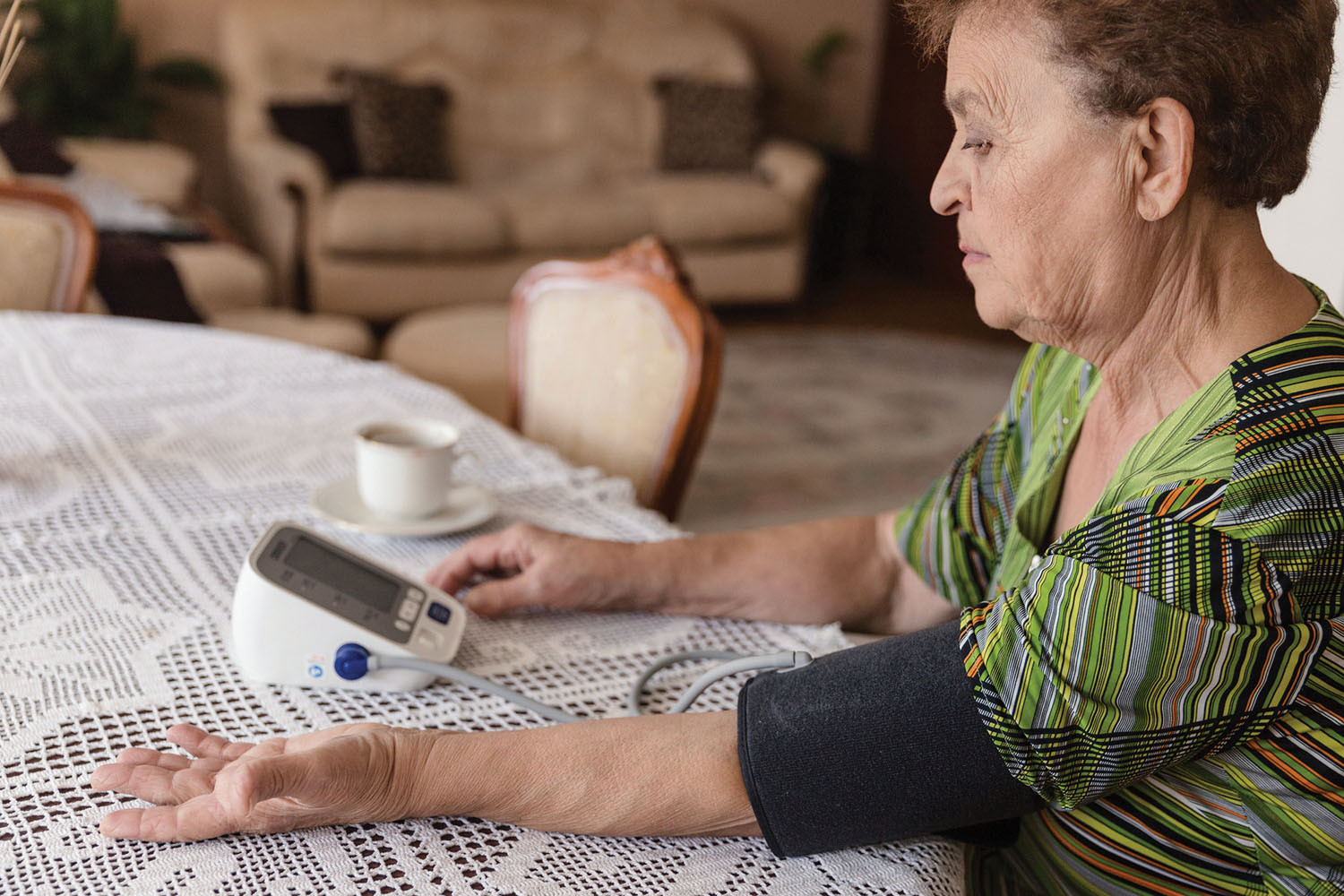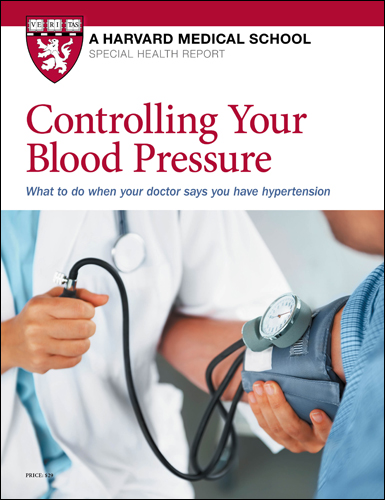The right way to check your blood pressure
Follow these tips to make sure you get an accurate reading — both at home and during health care visits.
- Reviewed by Deepak L. Bhatt, M.D., M.P.H, Former Editor in Chief, Harvard Heart Letter

Because high blood pressure rarely has any warning signs or symptoms, many people with this stealth condition don't realize they have it. But pressure that measures 130/80 millimeters of mercury (mm Hg) or higher — the official definition of high blood pressure — injures blood vessels, causing them to thicken and stiffen. Left untreated, high blood pressure eventually damages the heart, brain, and kidneys.
That's why every single health care visit should include a blood pressure check. Keep a record of your readings, which can fluctuate due to a range of factors, including exertion or stress. If your readings start trending toward the high range or you've already been diagnosed with high blood pressure, you should get a device for home-based checks (see "Choosing a home blood pressure monitor").
"Heart attacks, strokes, and other serious health problems correlate far more closely with home blood pressure than with office blood pressure readings," says internist Dr. Katherine Sakmar, assistant professor of medicine at Harvard Medical School. Blood pressure at home better represents what your heart and brain experience most of the time than blood pressure during the 15 to 20 minutes you're in a doctor's office, she explains.
Although automated machines have made checking blood pressure quite simple, it's still important to be aware of factors that can affect the accuracy of the reading, both in health care settings and at home.
Choosing a home blood pressure monitorHome blood pressure monitors range in price from about $40 to $100. Look for one that automatically inflates and automatically records the pressure. Many can store readings for a week or two, and pricier ones can wirelessly send the data to an app on your smartphone, making it easier to track your progress over time and share the information with doctors. Skip devices with a wrist cuff or a fingertip sensor, as they're not as reliable as those with an upper arm cuff. Be sure to choose the correct cuff size — the inflatable part should completely cover at least 80% of your bare arm. (A too-small cuff can give a reading that's falsely high.) Ask your physician if you're not sure if you should get a large or extra-large cuff. |
At the doctor's office
If you've never had your blood pressure checked in both arms sequentially, ask to have this done at your next health care appointment. If the reading from one arm is higher, that side should be the one upon which to base any treatment and to check in the future, says Dr. Sakmar. (Of note: women who've had a mastectomy should generally have their blood pressure checked in the arm on the side opposite to the breast that was removed.) Bring your home monitor to your next medical appointment to compare its readout with the measurement taken in the doctor's office. If the readings vary by less than 10%, you can consider your home monitor validated, says Dr. Sakmar.
General advice
Many factors (some of which may be connected) can slightly elevate your blood pressure — for example, drinking a lot of coffee, having a full bladder, and crossing your legs. Caffeine is a stimulant that raises the heart rate and also blood pressure. A full bladder and crossed legs can both reduce blood flow returning to your heart; your body's natural response to this is to raise your blood pressure to make sure your kidneys and brain are getting enough blood, Dr. Sakmar explains.
The following tips can help you get the most accurate blood pressure reading:
- Avoid caffeine, tobacco, and exercise for at least 30 minutes beforehand.
- Empty your bladder.
- Sit with your feet flat on the floor.
- Place the cuff on your bare arm (not over clothing) with the bottom edge about a finger's width above the crook of your elbow.
- Support your forearm by resting it on a table, with your elbow positioned roughly at heart height.
- Sit quietly without talking (or doing anything else such as reading, watching TV, or doing a crossword puzzle) during the measurement.
Current guidelines suggest that people wait one minute, retake the reading, and then average the two numbers. Follow your doctor's advice about when and how often to check your blood pressure at home. To watch a video from the American Heart Association demonstrating the correct technique, go online to https://targetbp.org/tools_downloads/self-measured-blood-pressure-video.
Image: © Dobrila Vignjevic/Getty Images
About the Author

Julie Corliss, Executive Editor, Harvard Heart Letter
About the Reviewer

Deepak L. Bhatt, M.D., M.P.H, Former Editor in Chief, Harvard Heart Letter
Disclaimer:
As a service to our readers, Harvard Health Publishing provides access to our library of archived content. Please note the date of last review or update on all articles.
No content on this site, regardless of date, should ever be used as a substitute for direct medical advice from your doctor or other qualified clinician.











